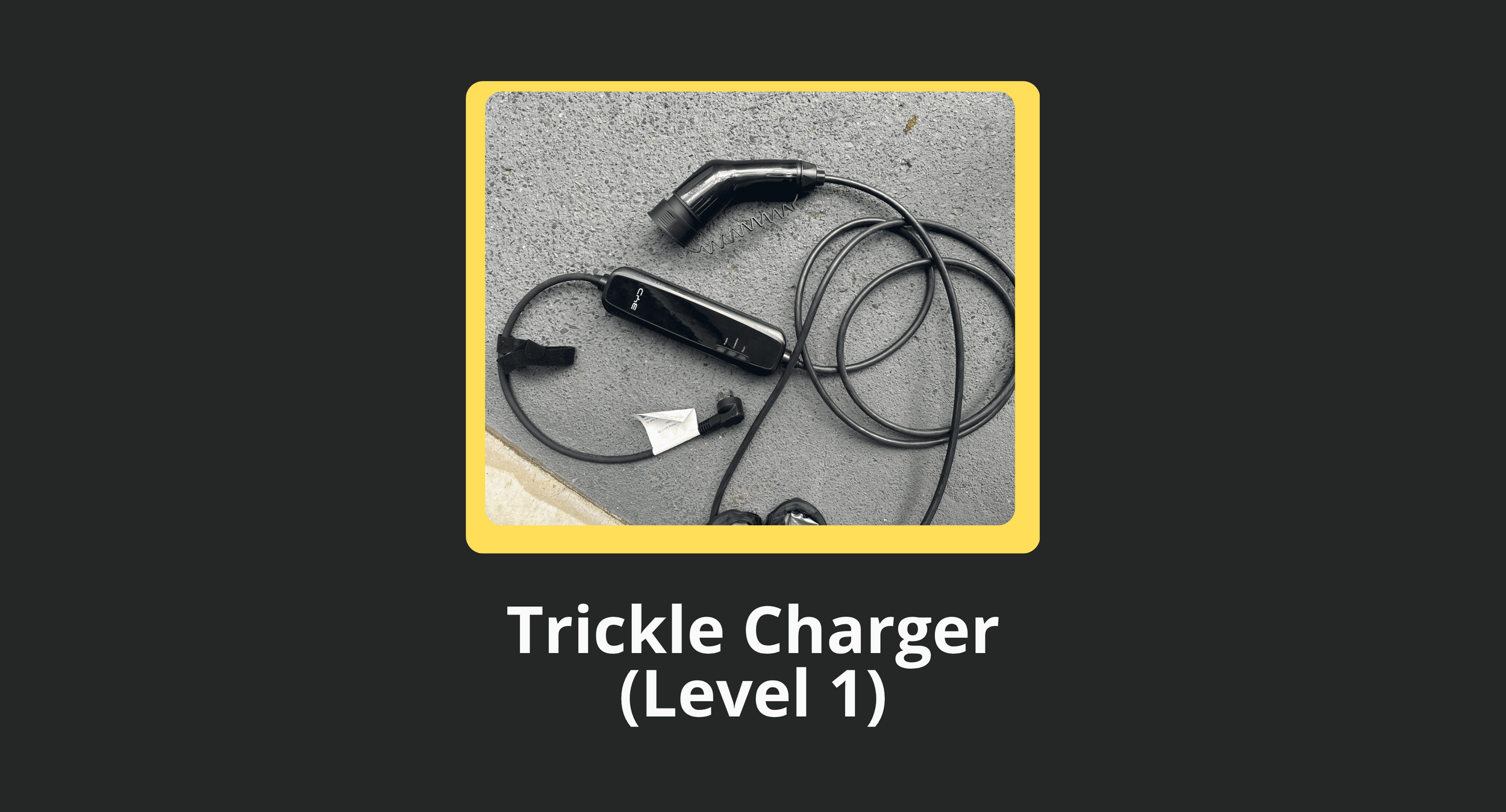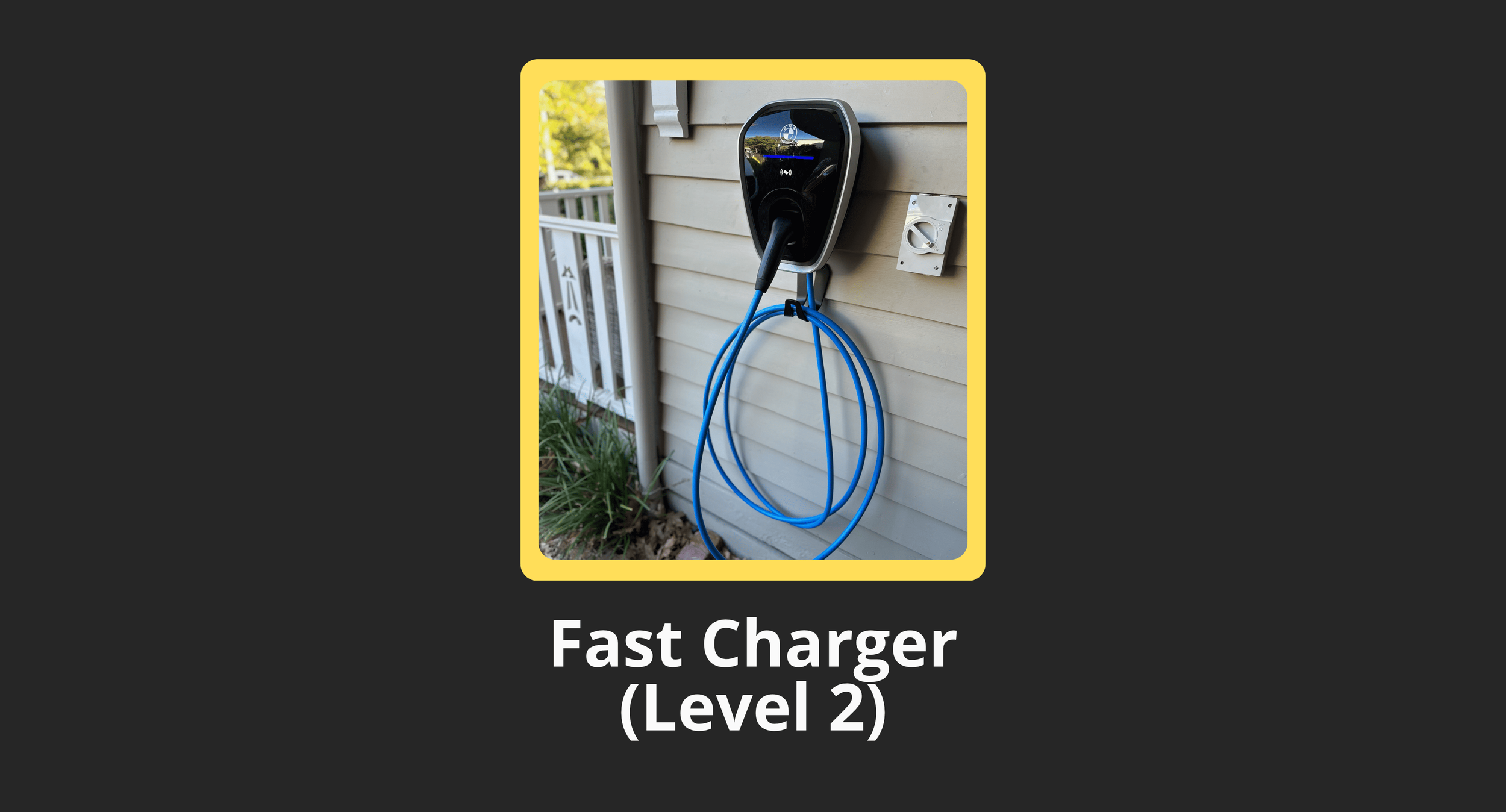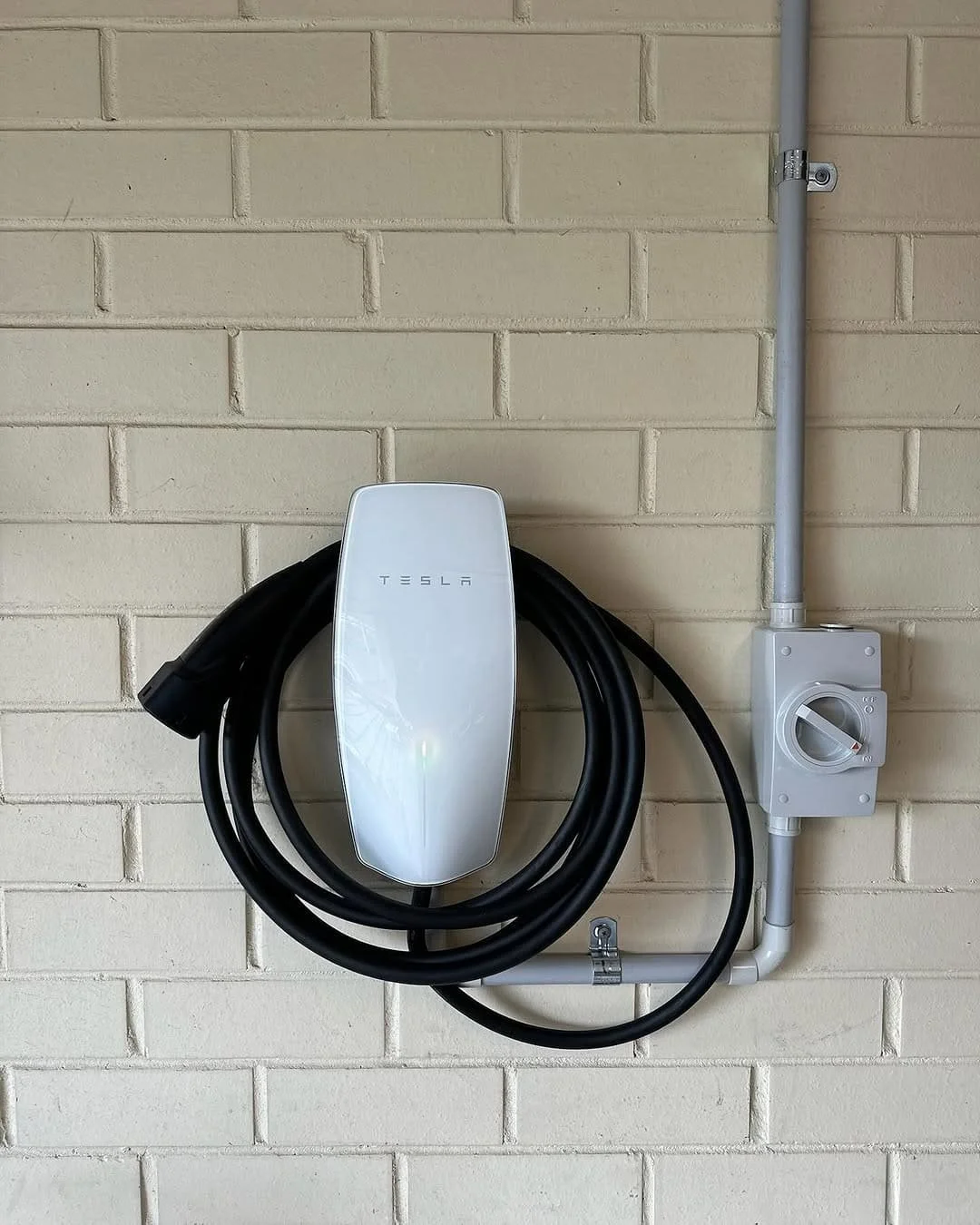Trickle Chargers vs Fast EV Chargers - Which Is Best for Your Home?
More Australians than ever are driving EVs, but choosing the right home charger can save you hours (and headaches) every week. You have two main choices in Australia: trickle chargers (Level 1) and fast EV chargers (Level 2).
Trickle chargers plug straight into your standard 10A power outlet, so they’re convenient but slow. Most EVs come with a basic 10A charger that connects to a regular household socket. For most vehicles, you’ll need to leave your car charging overnight, and for larger batteries or those with low states of charge, it can take significantly longer.
Fast chargers, on the other hand, use a dedicated 32A circuit that runs back to your switchboard. This allows them to safely deliver higher power and get your EV charged within just a few hours, depending on your power supply and the vehicle’s onboard charging capacity.
Now, this isn’t just about speed. It’s also about future-proofing your home. If you’re on the road a lot or your family relies on one car for commuting, a fast charger can make life easier. But if you only drive occasionally, a trickle charger might be enough.
Let’s look at both options in detail so you can decide what works best for your home.
Why Choosing the Right EV Charger Matters (Especially in Melbourne and Across Victoria)
Electric vehicles are booming across Victoria. In fact, EV registrations have grown by more than 30% each year, and Melbourne is leading the way thanks to strong state incentives.
With more EVs on the road, local power demand is rising, especially in areas like Box Hill, Blackburn, and Camberwell. Older homes may not have the wiring or switchboard capacity to handle modern EV chargers safely. That’s why it’s essential to select the right system and have it installed correctly. Our EV charger installation service covers everything from site inspection to switchboard upgrades, so your charger works safely and efficiently from day one.
If your home has aging wiring or a dated switchboard, you may need an upgrade before installing a Level 2 charger. And keep in mind that in Victoria, only licensed electricians can legally carry out fixed electrical installations.
Having your charger professionally installed isn’t just about compliance. It also protects your home from electrical faults and ensures your insurance remains valid.
Tip: The Victorian Government occasionally offers rebates and incentives to encourage EV adoption. These change from time to time and may focus on vehicle purchases or integrated systems rather than charger hardware alone. We’re happy to help you check what’s currently available.
What Is a Trickle Charger (Level 1)?
The trickle charger is the simplest EV charging option.
Key details:
Uses a standard 240V power point
Delivers around 1.4–2.4 kW output
Charging speed is typically 5–15 km per hour
Can take anywhere from 20 to over 40 hours for a full charge, depending on your vehicle
Best for: hybrid vehicles and drivers who don’t travel far each week.
Pros:
✅ No special installation required - plug it into your existing socket
✅ Lowest upfront cost
Cons:
⚠️ Slow charging speeds
⚠️ No smart features such as app control or solar scheduling
⚠️ May cause socket wear or tripping if used long-term on standard outlets
What Is a Fast Home Charger (Level 2 / Wallbox)?
A Level 2 charger, also known as a wall box, is a dedicated home charging unit that offers faster speeds and additional features.
Key details:
Installed on its own circuit for safety
Typical output: 7 kW (single-phase) up to 11–22 kW (three-phase), depending on your home’s power supply
Charging speed: usually 30–80 km per hour in real conditions
Compatible with smart features like app control, solar integration, and scheduled charging
It’s worth noting that your EV’s onboard charger determines how much power it can actually draw. Even if you install a 22 kW wall box, your vehicle may only charge at 7 or 11 kW, depending on its limit.
If your home currently runs on single-phase power, that’s fine - we can install a charger now and make it easy to upgrade to three-phase later if needed. (Read about three-phase power here).
Pros:
✅ Much faster charging
✅ Smart features for energy efficiency and convenience
Cons:
⚠️ Higher upfront cost compared to Level 1
Trickle vs Fast: Quick Comparison
Power Output
Trickle Charger (Level 1): 1.4–2.4 kW
Fast Charger (Level 2): 7–22 kW
Charging Speed
Trickle Charger (Level 1): 5–15 km per hour
Fast Charger (Level 2): 30–80 km per hour (typical)
Safety
Trickle Charger (Level 1): Uses a standard socket
Fast Charger (Level 2): Runs on a dedicated circuit designed for higher loads
Cost
Trickle Charger (Level 1): Minimal upfront cost
Fast Charger (Level 2): Around $1,000–$3,500, including installation
Best For
Trickle Charger (Level 1): Light drivers and hybrid vehicles
Fast Charger (Level 2): Daily drivers, solar-powered homes, and families with multiple EVs
Safety Note: Regular household sockets aren’t built for continuous high loads. To prevent overheating or circuit tripping, it’s best to have a dedicated circuit installed for any EV charger.
When Your Power Supply Becomes the Limiting Factor
Trickle chargers can run on both single and three-phase power, but having a dedicated circuit is still important to avoid overloading.
Fast chargers also work on either single or three-phase setups. However, you’ll only get the higher output (11–22 kW) if your home has three-phase power. On single-phase, most setups deliver around 7 kW, depending on your supply capacity and charger model.
You may need a mains upgrade if:
You want maximum charging speed
Your circuit breakers trip often
You notice overheating or burning smells from sockets
Which Charger Suits Your Driving Habits?
Trickle Charger: Light drivers (under 100 km per week), hybrid vehicles
Fast Charger: Daily drivers, long-distance commuters (150–200 km per week), solar-powered homes, households with multiple EVs
When you book a free consultation with us, our licensed EV installers will start by asking how far you typically drive each week. From there, we’ll recommend the best charger based on your usage, budget, and home setup.
Installation in Melbourne and Across Victoria: What to Expect
Legal Requirements:
EV charger installations must be carried out by licensed electricians
Must comply with AS/NZS 3000 (Wiring Rules) and, if integrating with solar, AS/NZS 4777
Some installations may require permits from local electricity distributors
Rebates or incentives apply only to compliant installations
Common Installation Challenges:
Older wiring or switchboards may need upgrades
Detached garages may require longer cable runs (we size and protect cables correctly to prevent voltage drop or overheating)
Financials and Long-Term Value
Trickle chargers are cheaper to set up, but their slow speed can become inconvenient.
Level 2 chargers usually cost between $1,000 and $3,500, including installation. Depending on your home’s wiring, costs may vary. While the upfront investment is higher, fast chargers offer major convenience and can reduce running costs when paired with solar power or smart charging schedules.
We’ve had many Melbourne clients start with a basic charger and upgrade later once they realised the time savings.
Why Choose AJD Electrical Solutions?
We’re a local Melbourne team with over 10 years of electrical experience. Our licensed EV charger installers handle everything from site assessment and switchboard upgrades to solar integration and full compliance with Victorian standards.
We’ll make sure your charger is safe, efficient, and future-ready. Call us today for a free consultation and quote, and we’ll help you find the right EV charger for your home and driving needs.





